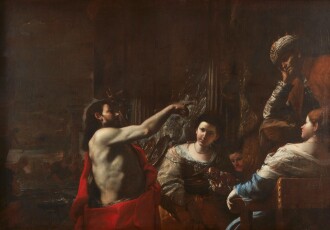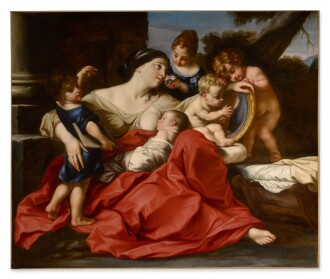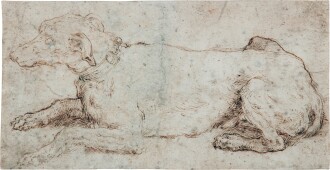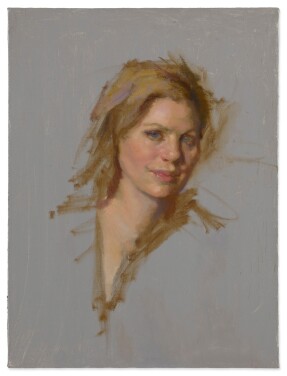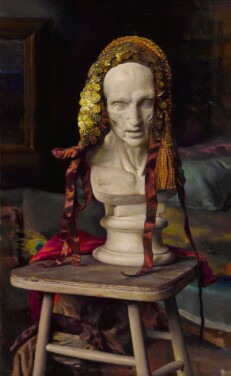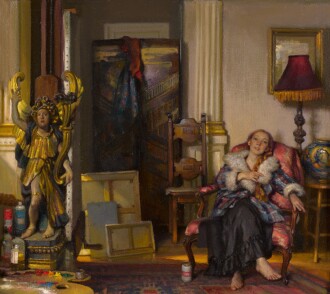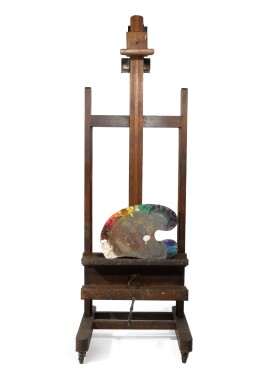S otheby’s is honored to present the collection of Nelson Shanks (1937 - 2015), American realist painter and portraitist to international leaders and celebrities. In addition to his own work, Shanks was renowned for his collection of Old Master paintings, sculpture, drawings, furniture, and decorative arts, all of which are offered in this exceptional sale. Shanks established a studio, art school and home in Pennsylvania, where visitors to his collection admired the high quality and rarity of the works by the most important Italian baroque artists. Highlights from the sale include a monumental masterpiece by Neapolitan artist Mattia Preti, with provenance dating back to its commission, a rare mature work by Guido Cagnacci, and a magnificent Venus by Dosso Dossi, which was thought to be lost until Shanks recognized it and acquired it. Shanks delighted in researching new acquisitions, and indeed correctly identified several works sold anonymously at auction: in addition to the Dosso, he recognized the quality of the Mola, Scarsellino, and Del Cairo in this sale, which are all accepted as autograph works.
From Shanks's own hand we are delighted to offer head studies for four commissioned portraits painted by Shanks of Princess Diana, Luciano Pavarotti, Renée Fleming, and Presidents Reagan and Clinton. Shanks was beloved for his ability to capture the inner mood and personality of his sitters, whom he painted from life over many sittings, following painterly tradition dating back to the Renaissance. It is no surprise, given his love for both realist painting and life study and the art of seventeenth century Italy, that he named his own art school, Studio Incamminati, after the academy founded by the Carracci family in Bologna.
Visit the Exhibition
Masters Week exhibitions open at 10am on January 22 with the final sale exhibitions closing on January 27 at 5pm. To schedule an appointment to view the exhibitions in person, please click here or contact appointmentsNY@sothebys.com or +1 212 606 7171. Walk-ins are also welcome. You can read more about our safety requirements here.
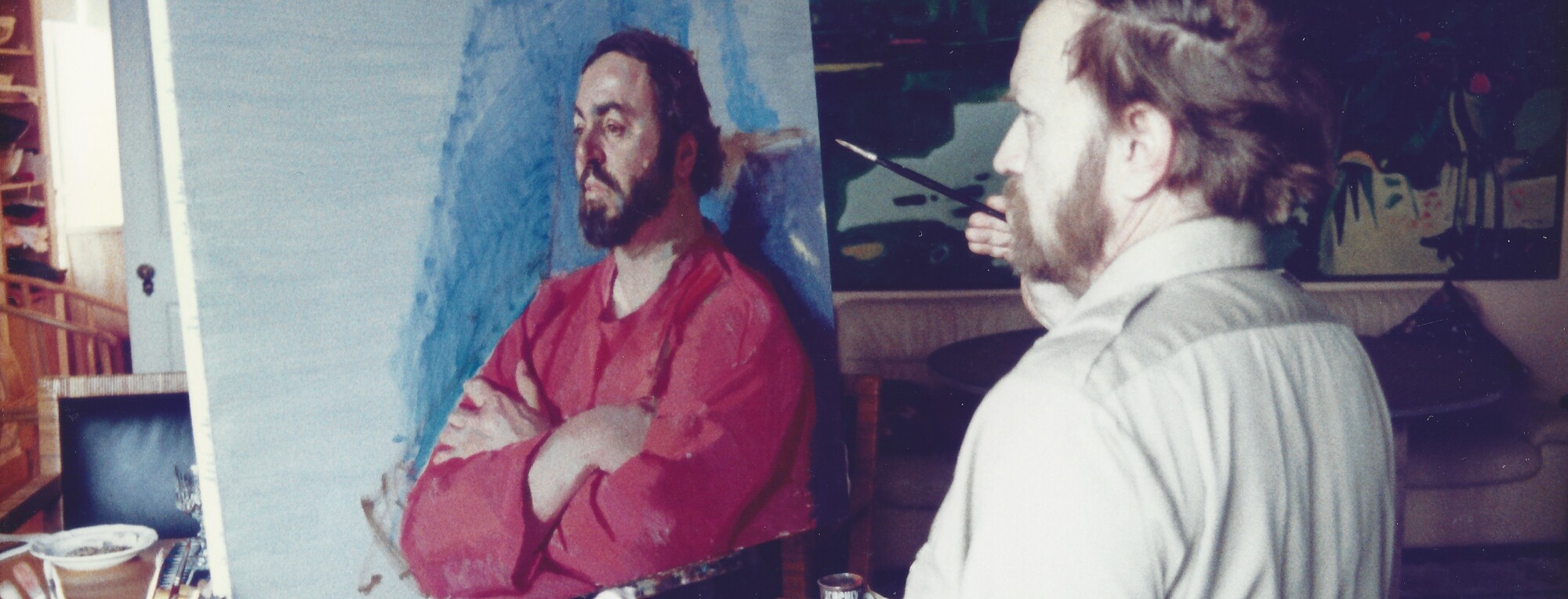

J ohn Nelson Shanks was born in 1937 in Rochester, NY and grew up in Wilmington, DE before training at the Kansas City Art Institute and the famous Art Students League in New York. From the beginning of his career he was enthralled by realism, and paid his tuition in New York by working as a class monitor for Robert Brackman, Ivan Olinsky and Edwin Dickinson, in addition to taking private courses with realists John Koch and Henry Hensche. Shanks received grants from the Greenshields Foundation and Stacy Foundation to study at the Accademia di Belle Arti in Florence, and upon his return began a teaching career.
“I like to think and design in color.”
Shanks served on the faculty of the Art Institute of Chicago, the Art Students League, National Academy of Design, George Washington University and the Pennsylvania Academy of the Fine Arts. He established a studio and home in Bucks County, PA, where he taught for over 30 years. He offered an apprenticeship program there with free room and board and tuition. After a series of successful workshops for realist painters in the late 1990s, Nelson and his wife Leona founded the Studio Incamminati in 2002. Incamminati translates roughly to “those who are progressing,” and the name pays homage to the Accademia degli Incamminati established by the Carracci family in the sixteenth century, where artists learned the principles of naturalism and realism. Like his Renaissance and baroque predecessors, Shanks valued studying nature and the human form and capturing beauty in color and light. In 2006 Pennsylvania Governor Edward Rendell honored Shanks with the Governor’s Distinguished Arts Award for his contributions to the arts of the commonwealth, in particular his commitment to teaching and the work of the Studio Incamminati.

Recognized for his ability to capture the inner life of his sitters, Shanks received many prestigious commissions to paint politicians, royalty, and celebrities. Some of his most famous portraits include those of Pope John Paul II for the Vatican Museums, Presidents Bill Clinton (see lot 114) and Ronald Reagan (see lot 112) for the National Portrait Gallery, and Princess Diana (see lot 110) for Kensington Palace. Other royal sitters include King Carl XVI Gustaf of Sweden and Queen Silvia of Sweden, and Queen Juliana of the Netherlands. Supreme Court justices Antonin Scalia and Ruth Bader Ginsberg sat to Nelson, as did former New York Mayor and businessman Michael Bloomberg and former Prime Minister of Britain Margaret Thatcher. He also portrayed Luciano Pavarotti (see lot 111) and Renee Fleming (see lot 113) for the Metropolitan Opera, former director of the National Gallery of Art J. Carter Brown, head of the Washington Post Katharine Graham. Shanks’s paintings have been exhibited at the National Gallery and National Portrait Gallery in Washington, Kensington Palace, and the Royal Palace in Stockholm. In 2011 he became one of only two living American artists to be invited to exhibit at the Russian Museum in St. Petersburg and the Russian Academy of Art, Moscow, where he had a solo exhibition.
“If you really want to seriously think about life, and therefore take painting very seriously…and take seriously the joys that it can bring to one, then you want to go to museums. You want to study the great art of the past…”
In addition to his prolific artistic practice, in which he painted nearly every day of his entire career, Nelson was an avid collector of painting, sculpture, drawings, and furniture, with a special affinity in the Italian baroque period. He collected over several decades and had a keen eye for identifying works by great masters even when they were not catalogued as such.
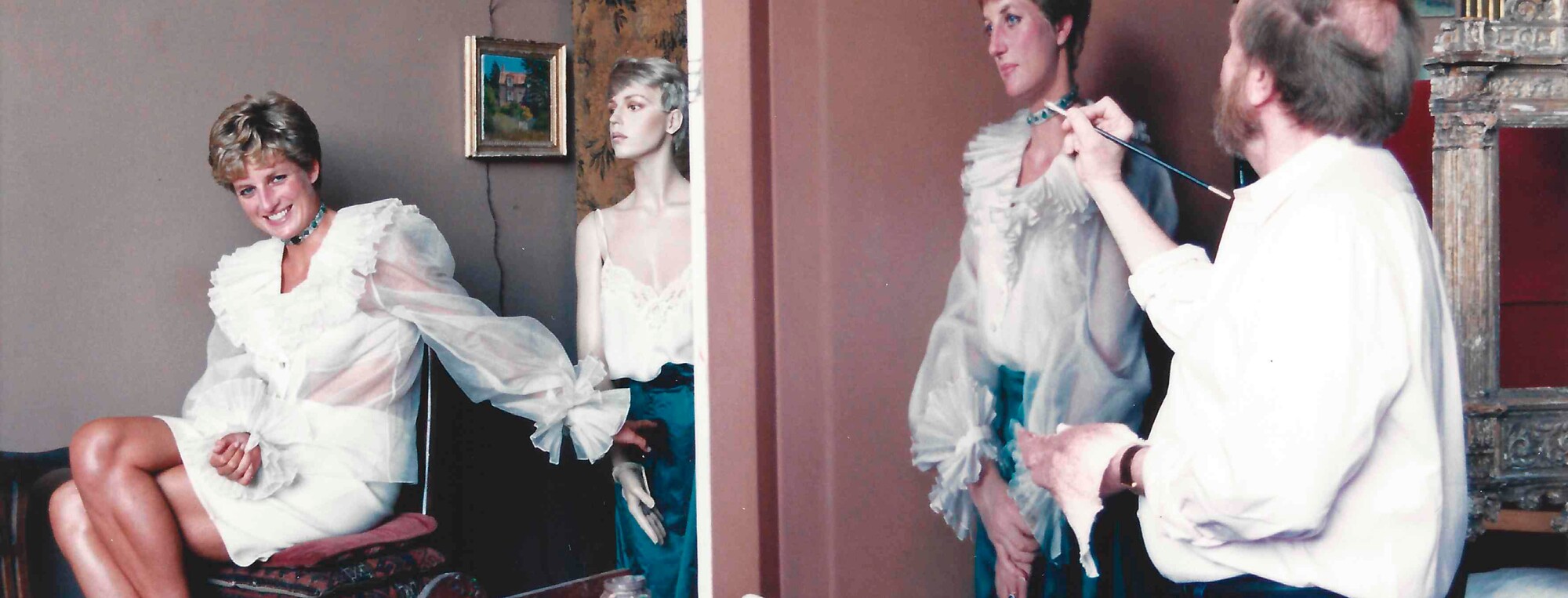
N elson Shanks was unsurpassed as a practitioner and teacher of traditional painting techniques handed down from the Italian Renaissance. Most formative was his time in Florence at the Accademia de Belle Arti studying under Pietro Annigoni (1919–1988), the eminent and outspoken classical realist who became a model for Shanks’s career. Annigoni had studied the techniques of the Renaissance masters and, as a portraitist, had welcomed commissions of celebrated sitters. Just as Annigoni portrayed Queen Elizabeth II, Pope John XXIII, and John F. Kennedy, so Shanks would eventually paint portraits of Ronald Reagan (see lot 112), Margaret Thatcher (fig. 1), Princess Diana (see lot 110) and later her brother Lord Spencer (both portraits now at Althorp), and Pope John Paul II (fig. 2).
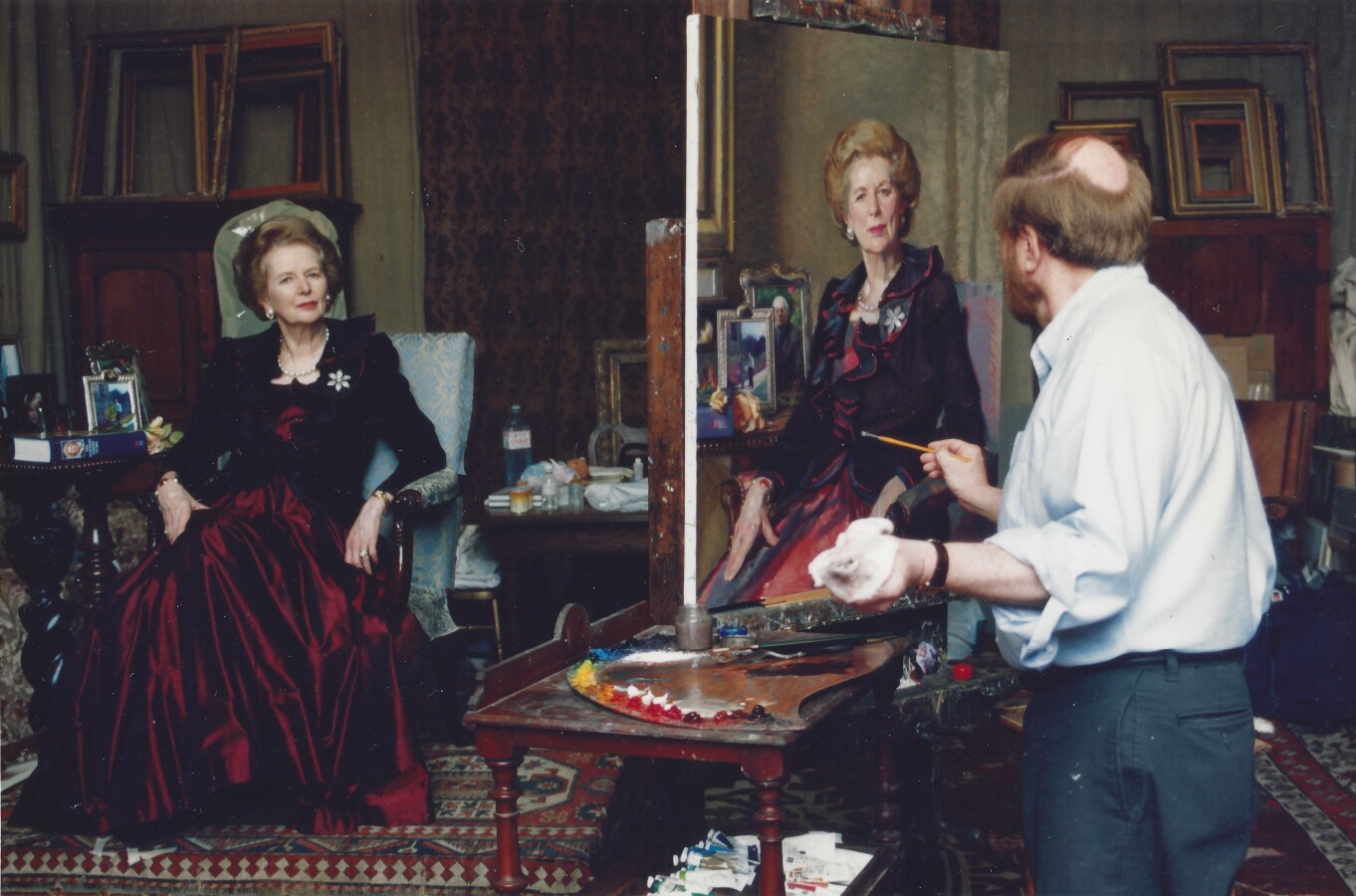
I first met Nelson Shanks in the early 1970s, when I was a young curator at the Philadelphia Museum of Art. He lived in a romantic house adjacent to a historic water mill in New Hope, Pennsylvania, surrounded by his own paintings-in-process and the beginnings of what was to become a museum-quality collection of Old Master paintings and applied arts. Visiting curators soon recognized that Nelson’s well-trained eye was remarkable and his knowledge of the Old Masters prodigious. Examples from his personal collection are now in the Princely Collections of Liechtenstein, the Museo Thyssen-Bornemisza, Madrid, the National Gallery of Australia, Canberra, and others.
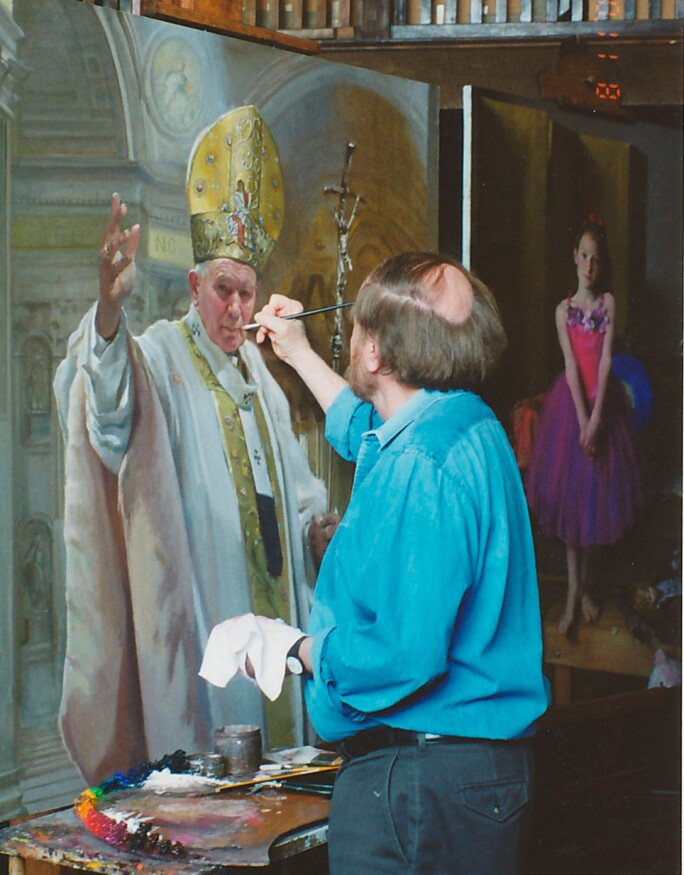
Years later in the 1990s I reconnected with Nelson when, with the support of a friend and patron, I started commissioning portraits of international figures. My patron and I selected American artists to paint portraits of “the good and the great” with the understanding that they would be offered either to the National Portrait Gallery or the National Gallery of Art (former NGA director J. Carter Brown had in fact been twice portrayed by Nelson Shanks). To this end, Nelson completed portraits of Mstislav (“Slava”) Rostropovich (2006), the Soviet and Russian cellist, conductor, and human-rights advocate; Harvard Professor of Comparative Zoology Edward O. Wilson, called “Darwin’s heir” and considered the founder of sociobiology as well as biodiversity conservation; and The Four Justices, 2012, the expansive group portrait of the first four women who served as U.S. Supreme Court Justices (inevitably called “The Supremes” by the staff of the NPG). These works of Nelson Shanks are today much-admired at the National Portrait Gallery.
Finally, Nelson has left one other living testimony to his passionate belief in the centuries-old tradition of painting from life. In 2002 Shanks, ever the enthusiastic and inspiring teacher, and his wife Leona established in South Philadelphia the vibrant Studio Incamminati, an art school founded under the reformist, anti-Mannerist spirit of the Carracci cousins in Bologna at the end of the sixteenth-century. The U.S. and international students of the Studio Incamminati carry on Nelson Shanks’s artistic vision in Philadelphia every day, much as he envisioned.
Sale Highlights

S
tepping into my father's studio was like stepping from the threshold of the contemporary world into the murky, romantic, glittering secret pocket of a bygone era. His studio transcended time and space. Spilling coffee in gridlock traffic, persistent telemarketers, the dismaying greyness of 21st century urban life -- all remarkably vanished and were replaced in an instant with an almost celestial beauty, rich, vast, dark and brilliant. Mystery engulfed you. The depths of the studio, from which you entered, were very dim; the North-facing window, grand and blinding, rose above you like a mountain that eclipsed everything in its wake.

It's quite strange, to tumble into time-travel. To be completely submerged in the sublime. But at that point your eyes would adjust. The previously-unnerving Rachmaninoff settled into context, evoking power, triumph, unearthly grandeur. The silhouettes of towering easels became tame as you came to realize their critical role, brandishing masterpieces. The brilliance of a belly dancer's belt of coins, the tinkle of her bangles, caused a lateral slide into delighted and bemused curiosity. You glanced around at the gilded statues, the stationary faces with frozen emotion, the light gels glowing like jewels. By then, you could only be dazzled. You were in the most intoxicating theater, featuring the world's greatest showman.
Finally, there the showman was. The genius appeared from what before had been just a moving contour against that towering white window. My dad.

A higher level of electrical fixation does not exist. Cigarette smoke dancing from one hand, the world's most prolific paintbrush creating visible, nearly living magic in the other. You sometimes wondered, if you were to touch him, would you feel the shock? His eyes -- wide, blue, superhuman -- could see through anything, and everything he created was first seen and believed in by those eyes. Eyes that gave color life, eyes that could help you see that light and color, chroma and feeling, were the stars of this dream-like, opulent show.
All only memories now. But this murky, glittering, secret theater is the place I visit when I seek inspiration. When I dream of a magical existence exempt from a grey world. After all, it's only beyond one dark threshold -- this ethereal realm of color so dazzling it eclipses everything in its wake. That's where my father is.
–Annalisa Shanks

T he pages of this catalogue tell the story of the world my sister and I grew up in. What appeared to visitors to be a small private museum was just a home to us. My sister and I played with our toys in gilded, marbled rooms featuring paintings by Dosso Dossi and Mattia Preti alongside sculpted Magdalenes, cupids, and saints wrestling with their own agony. We never thought twice about the incredible works that kept watch over us. Scholars, enthusiasts, world-famous singers and doctors would come to our home and stand in awe at the collection as we built Lego castles at their feet. Now, as a young adult, there is no denying the sensibility I gained from the aesthetic and visual beauty to which we were exposed throughout our home. It all seemed so normal when I was younger. My love of art was encouraged by my parents, but developed into something that felt immensely unique and personal to me.

I remember spending time with my father as he obsessively read through auction catalogues and art history books. He was always acquiring new work. I remember him identifying a particular painting in a sale, and joining him on his enthusiastic journey from inspecting the painting at the auction house to the final acquisition of the picture. I recall the week leading up to bidding day, as he repeated “You can't go to camp this year, honey, but you'll learn a lot more by studying the pentimenti.” We usually got the painting. And I usually was not allowed to go to camp. Looking back, I treasure the memory of joining in on my father’s research and I gained so much from his contagious appreciation for art. The memories I formed with him continue to shape my appreciation for the mysterious and exciting world of art.
Although my father is no longer on this earth, so many of his profound passions are still revered and practiced by the Shanks family. For my sister, my mom and me, the heartbeat of the Baroque still beats.
–Alexander Shanks
LEAD IMAGE: The Shanks family in their home at Chelwood, with Mattia Preti painting (lot 144) behind them, 2002

N elson Shanks was one of the most important painters of formal portraiture in the second half of the last century—the list of his commissions is worthy of a 20th century Anthony van Dyck or Joshua Reynolds. Kings, queens, presidents, prime ministers, aristocrats, justices, scientists, writers, actors, singers, and even a pope all sat to Nelson in a veritable “who’s who” of the contemporary world.
As with his collecting, Nelson’s portraiture practice was informed by the classical tradition of European painting. Sittings were conducted in person, in one of his studios, and were always an exchange of thoughts and ideas; Nelson delighted in conversation and used this as a tool to understand his subjects better. He adapted and expanded the language of Renaissance and Baroque portraiture to a contemporary use. The results could sometimes be unexpected, such as in his Self-Portrait of 1987, which is a witty take on Titian’s Portrait of Gerolamo (?) Barbarigo, in the National Gallery, London, with Nelson replacing the quilted blue satin sleeve of the Venetian patrician with his own, torn denim jacket (fig. 1).
“If you can imagine a painting—no matter how facile—that doesn’t show character, something is missing. Representation of character is really what counts to me.”

The paintings by Nelson presented in the present auction were important steps in his creative process. For each final portrait, several spontaneous head studies in oil were made, capturing different moods and attitudes of his sitter, until a final composition was determined. Working rapidly, Nelson painted on a buff ground, executing his head studies on a fairly large scale, changing the position of the sitter, sometimes the costume, sometimes just trying to capture an emotion or personality trait. Often, these studies were almost final paintings in themselves, such as the ones he executed of Justices Sandra Day O’Connor and Ruth Bader Ginsburg (fig. 2), which were later included in his final group portrait of The Four Justices, a painting of the first four women on the Supreme Court (all National Portrait Gallery, Washington, D.C.) But, in these works, sometimes more than in the final portraits, you also often see Nelson’s relationship with or understanding of the sitter—in the serious, presidential bearing of Reagan and Clinton, the operatic smile of Pavarotti, and the wistful downward gaze of Princess Diana.



